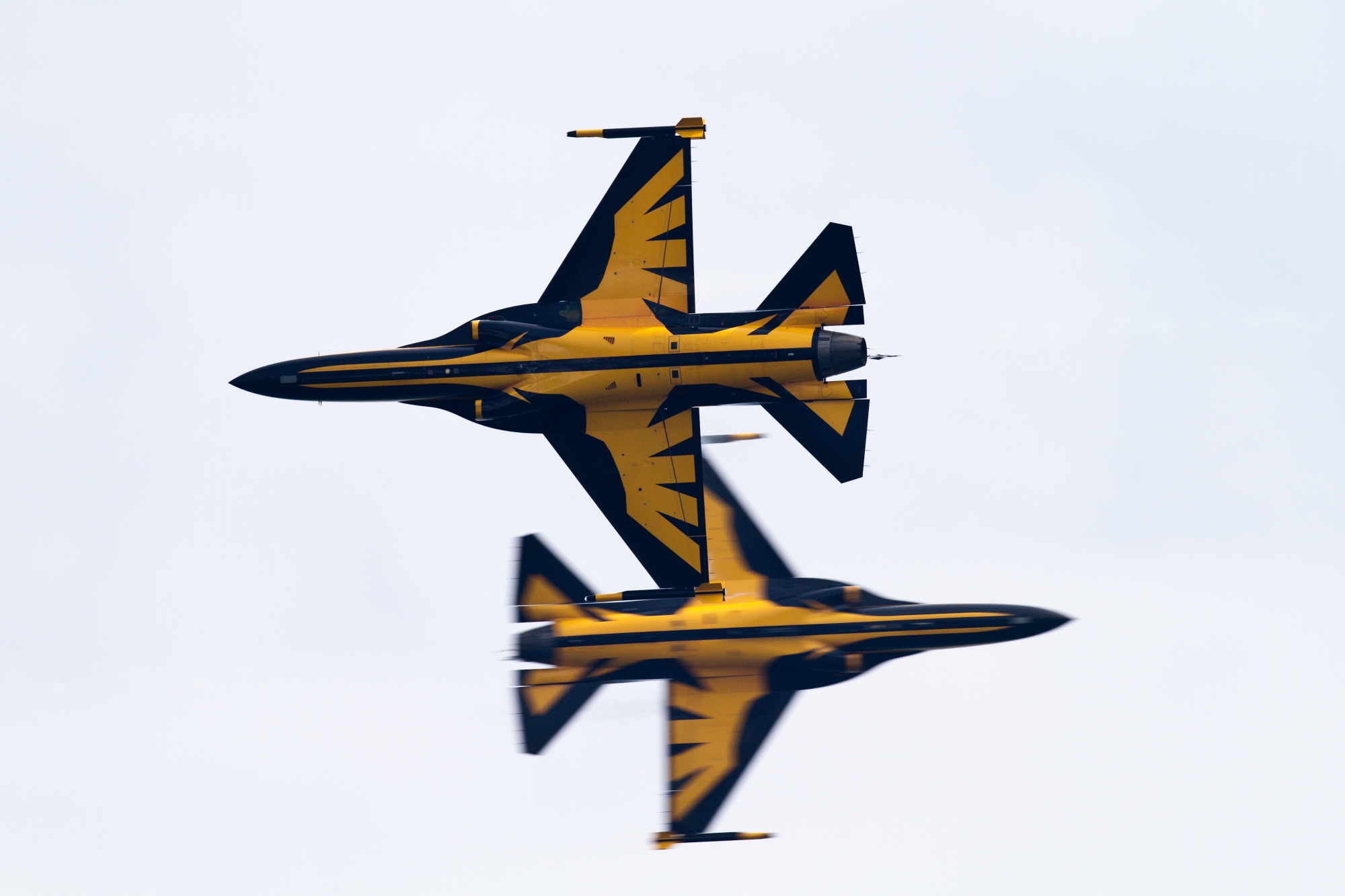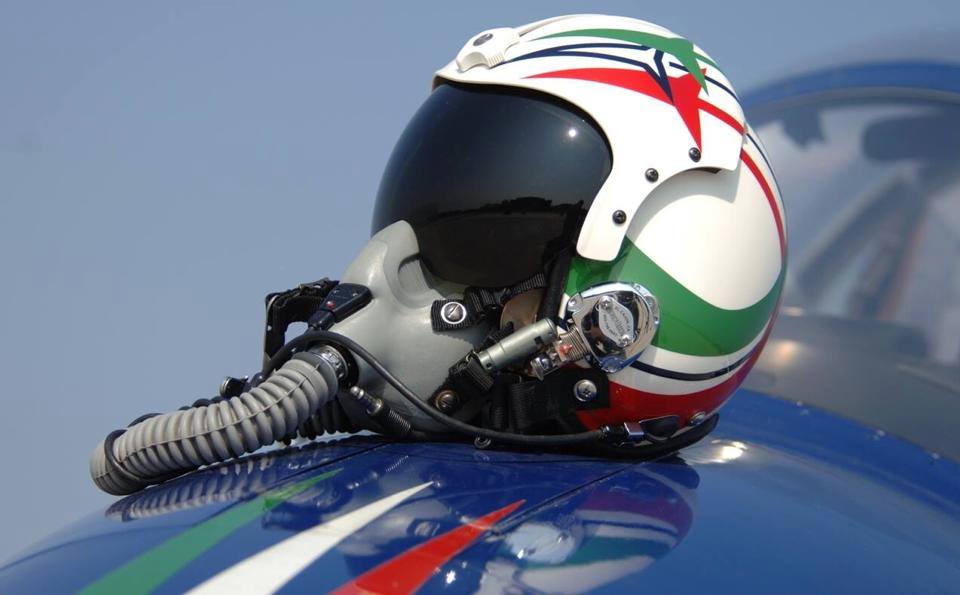TEHRAN | The Iranian Air Force today took delivery of three indiginous HESA Kowsar fighters, seemingly destined for a new aerobatic team.

A newly-delivered Kowsar at the delivery ceremony today. Photo: Iran_Newsroom.
The Iranian Defence Ministry handed the three aircraft to the Islamic Republic of Iran Air Force (IRIAF) in a ceremony on Thursday 25th June, at which the specially-painted planes performed formation manoeuvres and flypasts.
Iran’s most recent official aerobatic team, Golden Crown, flew eight Northrop F-5Es up until the Imperial Iranian Air Force was dissolved in 1979. In recent years, Iran has harboured ambitions to create a new team, with the commander of the IRIAF stating in February this year that he hoped a three-ship Kowsar display would be ready in time for the Army Day parade in April. Although the deadline has been missed, the special paint schemes, along with the matching pilot helmets and routine of formation flybys, would suggest that the three jets delivered today are intended for aerial displays.
The Kowsar is an Iranian-built derivative of the Northrop F-5F, which made its first flight in 2018 and is claimed to be a 4th generation fighter. However, one of the Kowsars delivered today is a 43-year-old modified F-5F, still wearing Northrop decals on the ejection seat, despite Iran insisting that the Kowsar is entirely indiginously produced.


Almost identical: The new Iranian jets (left) and the Black Eagles (right). Photos: Iran_Newsroom and Alert5 (via Wikimedia Commons)
Aside from the knock-off F-5s, airshow enthusiasts will note several more bizarre elements of the new team. The paint scheme is remarkably similar to the design applied to the underside of the Republic of Korea Air Force’s Black Eagles team, even mirroring several minor details of the Black Eagles’ design such as the number and position of the Black Eagles’ styalised trailing edge feathers.
Footage broadcast on Iranian television also shows the pilots wearing matching helmets, which very closely mirror the helmet design and logo used by the Italian aerobatic team, Frecce Tricolori. Again, even some minor details of the design have seemingly been copied, including the rough design and placement of the Frecce’s trademark three arrows.


Spot the difference: The logo on the Iranian pilot’s helmet (left) is remarkably close to that of the Frecce Tricolori (right). Photos: @Iran_Newsroom and Frecce Tricolori.
While most teams strive to create an individual, recognisable brand and identity, Iran has a history of copying foreign aerobatic teams’ paint schemes. While flying the F-84G Thunderjet, the Golden Crowns’ paint scheme shared more than a passing similarity to that of the Thunderbirds. Upon graduating to the F-5A Freedom Fighter, and later the F-5E Tiger II, Golden Crown adopted a new scheme that was almost identical to that of the Thunderbirds, who were by this point flying the T-38 Talon.


One image shows the Thunderbirds, one shows Golden Crown. It’s hard to tell which is which. Photos: Wikimedia Commons and Will Schlitzer (via Wikimedia Commons).
More recently, three HESA Saeqeh jets (modified F-5s, like the Kowsar) were painted in a near-replica of the US Navy Blue Angels’ paint scheme during test flights and flybys in 2007. The IRIAF even copied the Blue Angels’ famed cursive typeface, replacing the American team’s name with the words “Air Force”.
Unlike Golden Crown, neither the Blue Angels-livered Saeqehs nor the newly-delivered Kowsars appear to be fitted with smoke systems, on the basis of photos of the aircrafts’ tailpipes.


A laughable likeness: Iranian jets (right) in a Blue Angels (left) colour scheme. Photos: Shahram Sharifi (via Wikimedia Commons) and David Leadingham (thisisflight.net).
It is extremely unlikely the aerobatic team will be seen outside Iran in the foreseeable future, but it’s probable that formation displays will be seen at domestic events such as military parades and the Iran Airshow in Kish. Iran’s claim that the fighters were domestically-produced will make the team a powerful propaganda tool, and senior officials have already declared today’s delivery as a sign of increasing strength in the face of international sanctions.
However, why the nation has, for over half a century, felt the need to repeatedly copy a selection of existing, seemingly-unrelated teams from around the world, rather than developing its own unique team identity, remains a mystery.